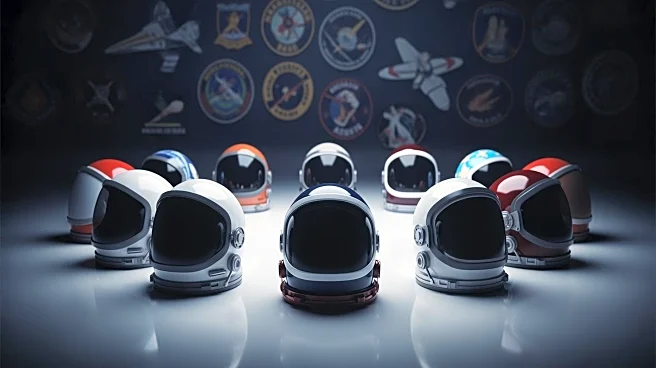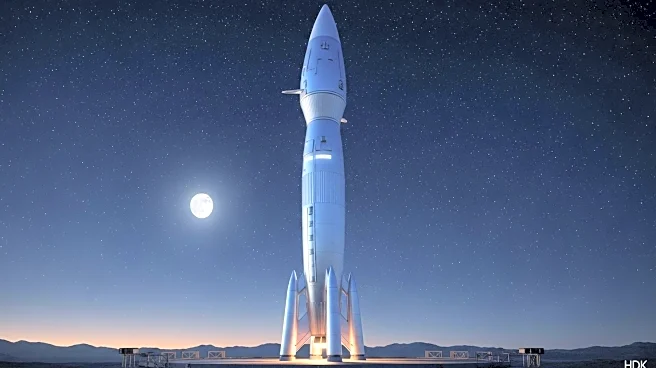What's Happening?
James Bluemel has released a new book titled 'Once Upon a Time in Space,' which is accompanied by a BBC documentary of the same name. The book and documentary explore the history of the space race through a collection of photographs sourced from astronauts'
personal collections and NASA archives. The project aims to capture the beauty and significance of space exploration, featuring images from various missions, including the Apollo 17 moon landing and the space shuttle Atlantis connected to the Russian space station Mir. Bluemel emphasizes the emotional impact of viewing Earth from space, a sentiment shared by many astronauts and cosmonauts who have had the opportunity to witness the planet's beauty from above.
Why It's Important?
The release of Bluemel's book and documentary comes at a time when space travel is becoming increasingly accessible and affordable. As more individuals have the opportunity to experience space flight, the cultural and scientific significance of these missions continues to grow. The project not only preserves the historical achievements of space exploration but also inspires future generations to pursue advancements in space technology and exploration. By showcasing the emotional and aesthetic aspects of space travel, Bluemel's work contributes to a broader understanding of humanity's place in the universe and the importance of continued exploration.
What's Next?
As space travel becomes more accessible, the number of people experiencing space flight is expected to rise significantly. This increase may lead to more diverse perspectives and contributions to the field of space exploration. The documentary and book may inspire new interest in space tourism and scientific research, potentially influencing public policy and investment in space programs. Additionally, the emotional impact of viewing Earth from space could foster a greater appreciation for environmental conservation and global cooperation.
Beyond the Headlines
Bluemel's project highlights the ethical and cultural dimensions of space exploration, emphasizing the shared human experience and the universal admiration for Earth's beauty. The photographs serve as a reminder of the fragility of our planet and the need for responsible stewardship. As space travel becomes more common, these images may influence cultural perceptions of space and encourage a more unified approach to addressing global challenges.













